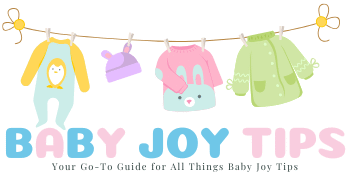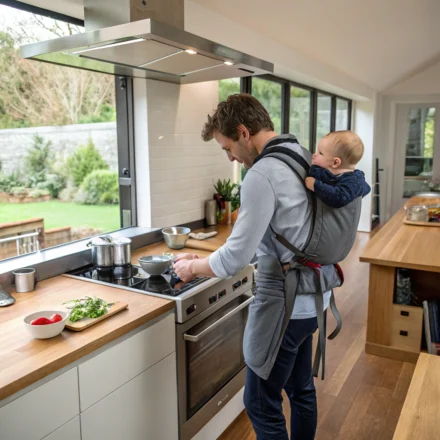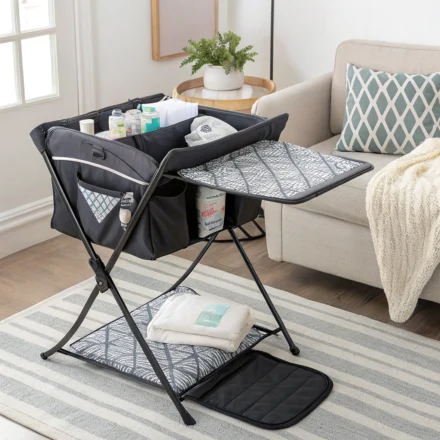One day, your baby naps twice like clockwork. The next day, they are either singing in their crib during the second nap, or they are melting down by dinner time after refusing to sleep again! If you can relate, your child may be entering the baby nap transition from 2 naps to 1.
This is a big developmental leap and can be chaotic if you are not prepared. However, if approached with intent, this transition can be smooth sailing without frustration, confusion and tears—for you and your baby!
In this post we’ll discuss everything you need to know about the 1-to-2 nap transition : when it occurs, signs that it is time, and gentle nap transition strategies that protect your baby’s sleep and sanity.
When Does the 2-to-1 Nap Transition Occur?
Most toddlers will drop their second nap sometime between 13–18 months, with some dropping it as early as 12 months and others dropping it as late as 20 months. Like most things in parenting, there is no exact time frame.
Signs it’s time to change :
- Baby skips their second nap for multiple days in a row
- Bedtime becomes a struggle / continually pushes later
- Early morning wake-ups start creeping in
- Baby naps well once, and then consistently resists the other nap
- More overall fussiness or overtiredness appears early evening
The sooner you are able to identify the signs, the sooner you can make an adjustment to the nap schedule before sleep deprivation sets in.
Why This Nap Transition Is So Tricky
Unlike the 3-to-2 nap drop that happens around 6–8 months, the baby nap transition from 2 to 1 often includes:
- Overtiredness due to longer wake windows
- Under-tiredness during the first nap, leading to refusal
- Resistance to change (your toddler is more aware now)
- Teething, separation anxiety, or new skills that disrupt sleep
All of these factors make it crucial to approach this change with gentle sleep methods and flexible routines.

Gentle Nap Transition Methods (No Tears Needed)
Here are no-tears nap training strategies that support your child’s development while minimizing disruption.
1. Watch Wake Windows Closely
During the transition, wake windows will stretch to 5–6 hours before and after the nap.
Try this gentle adjustment:
- Begin the day at 7:00 AM
- Nap at 11:30 AM (gradually push it later)
- Bedtime around 6:30–7:00 PM
If your child is struggling to make it to the nap without meltdowns, offer a short bridge nap (10–20 minutes in the stroller or car) in the late morning for a few days.
2. Utilize Nap Consolidation Strategies
This phase is all about nap consolidation; we want to help your baby combine their total daytime sleep into one solid nap.
Things to try :
- Darken the room and use white noise to get a longer nap
- Have a full feed or lunch before nap
- Stay close to them to help resettle if they wake too soon (if they wake too soon you can provide crib-side reassurance)
- If it is still too short, you can slowly push the nap later in 15-minute increments.
It may take 2–3 weeks for the single nap to consistently stretch from a total of 60 minutes to a total of 90+ minutes.
3. Establish a Nap Routine
An established baby nap routine helps the body wind down and signals to your toddler that it is time for rest – even if their brain is busy.
Here’s an example of a 10–15 minute nap routine :
- Diaper change
- Dim lights + sound machine on
- Read a calming story
- Cuddle or rock for a short time
- Lay the baby down drowsy but relaxed
Consistency is very important here – the routine makes naptime feel familiar for both you and your child, especially in a transition.
4. Adjust Bedtime Temporarily
Don’t be afraid to move bedtime earlier during this transition phase. A 6:00–6:30 PM bedtime is often needed, especially if the nap was short or your child skipped their second nap early in the process.
Remember: early bedtime does not cause early waking—it often prevents it.
This is one of the most overlooked but powerful toddler nap transition tips.
5. Allow for Flex Days (2 Naps Some Days, 1 Nap Others)
During this nap transition, your baby may go back and forth between one and two naps for several weeks.
That’s normal—and even healthy.
Support this with:
- A “nap test” each morning—does baby seem tired before lunch?
- Offering 2 naps on difficult days, like after poor night sleep
- Avoiding rigid expectations—flexibility is key
Your goal isn’t perfection. It’s helping your baby slowly shift without losing too much daytime sleep.

What if baby starts waking at night again?
Night wakings or early rising can happen temporarily during the baby nap transition.
Here are a few tips :
- Stay consistent with your day-to-day happenings
- Provide comfort, but avoid starting new behaviours (for example, rocking baby to sleep again)
- Re-affirm a relaxing bedtime routine
- Don’t rush in too soon – allow a few mins for baby to settle
Most regressions diminish within 2 to 3 weeks when your child adjusts to their new rhythm.
Example of a Nap Schedule after the 2 – 1 Transition
Here is a post-transition nap schedule, it will work about the same for many toddlers approximately 14 – 18 months :
7:00 AM – Wake
11:45 AM – 1:45 PM – Nap (aim for 1.5 to 2 hours)
7:00 PM – Bedtime
If your child continues to wake early or their naps are short; try pushing the nap later by 15-30 minutes, or try the occasional 2-nap day (especially if done just the same day each week).
Conclusion
The transition from 2 naps to 1 can be stressful and sad but does not have to be. If you are tuned in into your child’s cues, transition gradually, and use gentle nap transition strategies, you will help your child ease into a new routine.
This is not only about sleep—it is about providing emotional safety and trust during a significant growth spurts. With these baby joy tips, you are doing that
Did you find this helpful? Share this post with other toddler parents, or read more gentle sleep transition strategies on babyjoytips.com.
Frequently Asked Questions
When do babies drop to one nap?
Most babies transition from two naps to one between 13 and 18 months; some may show readiness as early as 12 months.
How long should a 1-nap schedule nap last?
1.5 to 2 hours. Anything less than one hour may mean that your baby needs more time to adjust or is not ready yet.
Can my baby go back to two naps after transitioning?
Yes, temporarily. Many toddlers go back and forth between 1 and 2 naps for a couple/in a few weeks before they settle into a one-nap routine.
Should I sleep train during a nap transition?
It is better to refrain from sleep training while your baby is still adjusting to the one-nap schedule. Transitions themselves may temporarily impact sleep which makes sleep training more challenging.
What if my baby fights the only nap?
Try pushing the nap later (closer to 12 – 12:30 PM), make the nap environment as dark as possible, and be sure to have a consistent pre-nap routine.








Leave a Comment